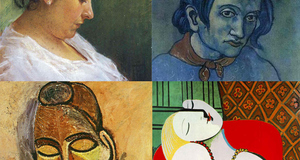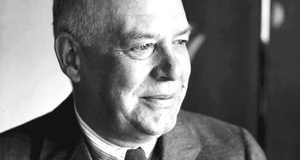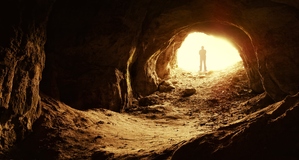How Everything Fits Together: On Knowledge and Ancient Understanding
By
2012, Vol. 4 No. 10 | pg. 2/2 | « This essence is just as much a part of everything as everything else. In this sense, the essence of a thing is the essence of all things, which can be known as the Universe or pure knowledge. Pure knowledge does not allow someone to know the answer to everything, for there is no answer to receive. Instead, pure knowledge is the connection that every essence has with one another. Every thought, dream, person, animal, feeling, emotion, galaxy, or question (this list goes on forever) has an essence which is part of one whole thing that no more intricate or extravagant than any one thing that it consists of. With no beginning or end and with no size, it is impossible for something to be added or taken away. For this reason, each and every thing in the Universe, is the Universe. Remember, everything is one, separation is an illusion. Therefore everything that exits is existence as a whole. Imagine one thing not existing, maybe the pen sitting at your desk. It is possible to conceive this pen to have never been created; however, this means that the materials used to make the pen are existing somewhere else in some other form. Also, the idea of the pen still exists, thus, the essence of that pen still exists. If this example did not work for you imagine the Universe as such -∞----------------∞. Here we have everything all at once. Now imagine that something (anything) is taken away from this, -∞------- --------∞. This represents a universe that never did not exist and will never not exist; yet, for a moment does not exist. This idea is preposterous and impossible. This shows that in order for anything to exist, everything must exist! Not only must everything exist, but it must exist in harmony as everything all at once. Cause and effect is yet another phenomenon that is falsely assigned. Things exist together, not one after the other. Humans see things happen in an order and without question believe it to be so. In actuality, cause and effect are one in the same, much like that of light and dark or good and evil. In “The Book” Alan Watts uses a great example to entertain this notion. A man is looking through a small hole in a fence.Through this hole he sees a cat (for the sake of this example the man has never seen anything like this before), which is pacing back and forth. As the cat passes the man’s narrow view, he first sees the head of the cat followed by the neck, then chest and front legs. Next he sees the stomach pass by, followed by the rear-end and the tail. The cat paces back around and again the man sees the head, body, then tail. After a while of observing this, the man concludes that the head is the inevitable cause of the tail. He fails to realize that everything he saw were actually parts of the cat as a whole (1966). This is much like the way people view reality, they do not realize that everything that exists, exists as one. Aristotle made this error in his idea of Causation and Teleology. He believed that to truly know something we needed to know the thing’s material cause (matter), formal cause (form or pattern), efficient cause (creating force), and final cause (purpose for existence) (Hergenhahn, 2009). He believed that everything had a specific purpose and before one could understand this purpose they needed to know these four causes. Apparently, Aristotle’s teacher, Plato, did not get through to him very well. To truly know something is to know that things essence. To know the essence of a thing we must fully understand why that thing is doing what that thing does in every aspect of the physical world, as well as the spiritual realm to which all things are connected. A famous Taoist poem, “Cottleston Pie” written by A. A. Milne comes into play here. Cottleston Cottleston Cottleston Pie So why does a Chicken? The truth is, it is impossible to truly understand why a chicken does chicken things. To truly and fully know this, we must know how this particular chicken was brought to where it is and why in is there. This means we must know the terrain, climate, genetics, food necessity, and so on. Along with this comes the need to understand, in the same way, the essence of all things involved with the chicken, and all things involved with all those things and so on. Much like, to completely know a person, we must know every experience they have had in life that made them into who they are. This process can be broken down an infinite number of times with the final answer being outside the physical realm and ending with the Universe. Which is the essence of everything. As stated before, everything is one within the Universe. Obviously, one can see a chicken and confidently say, “that’s a chicken.” This is okay as long as they realize that the way to a full and complete understanding of that chicken requires a full and complete understanding of everything, this explanation is the universe. The explanation of a chicken then is the explanation of all existence as is the explanation of any thing. It is easy to see than that all things are an equal part of everything, meaning everything is one thing, the Universe, and the Universe is each individual thing which makes each thing, everything. All is one and one is all. If this chicken was taken from the universe we would run into the problem of having -∞------- --------∞. For the Universe to exist, for existence to be possible, a chicken must chicken; and that is why. Plato desired a much deeper answer to things; one that went beyond the physical world and into one that could not be understood using the senses. One must reach deep within himself into to understand his essence. The essence of a thing could not be seen, felt, smelt, tasted, or heard as Aristotle later suggested (Hergenhahn, 2009). Plato even wanted a deeper answer than Socrates who believed the essence of a thing to be a well-oiled definition. In Plato’s “Allegory of the Cave” he addresses the problem with relying on sensory experience and the natural world for answers of true knowledge. Prisoners chained in a cave (where they lived their entire lives) so they can only see shadows of themselves and those who pass on the road behind are created to represent humans bound by their senses. The prisoners live in a world where shadows are the reality. Plato describes what would happen if a prisoner were to escape. He would first be blinded by the sunlight and would be baffled by the three dimensional figures that walked amongst him. His reflection in the water would scare him for he would experience difficulty with the realization of his own existence. With sight still disrupted from the sun, the escaped prisoner would travel back into the cave to teach the others of this new realization. The prisoner would now find it very arduous to readjust to his life of shadows. He would make many mistakes in interpreting the shadows and would seem uncertain of what his fellow prisoners believed to be true. The fellow prisoners would be very turned off by this and would fight to continue living in their world of shadows. The death of Socrates, Plato concludes, is a perfect example of what may happen to someone if they were to now try and free the prisoners from their insensible world of shadows (Plato, 1992). With an understanding of ancient philosophy it is obvious that the question of what is real still remains. Since the beginning of rational thought and human culture we have created a vast structure of questions and theories that will only keep building. This goes to show that the fundamental properties of human existence have been around since our beginning and will continue until our demise. Maybe a day comes, for every living being, where we get an answer. The only ones who know if this day approaches are the ones who have already reached it. Until then we must set ourselves free of influence and common culture. There must be an answer but no one can be sure. As for now, the safest resolution to follow would be that, as humans, we truly know nothing at all. ReferencesHergenhahn, B. R. (2005). An introduction to the history of psychology. Thompson Wadsworth, Belmont, CA. Plato. (1992). Republic (G.M.A. Grube, Trans.). Indianapolis, IN: Hackett. (Original work written 380 B.C.) Reeve, C. D. E. & Miller, P. L. (2006). Introductory readings in ancient greek and roman philosophy. Indianapolis, IN: Hackett. Watts, A. W. (1966). The book on the taboo against knowing who you are. New York: Collier Books. Suggested Reading from Inquiries Journal
Inquiries Journal provides undergraduate and graduate students around the world a platform for the wide dissemination of academic work over a range of core disciplines. Representing the work of students from hundreds of institutions around the globe, Inquiries Journal's large database of academic articles is completely free. Learn more | Blog | Submit Latest in Philosophy |


















